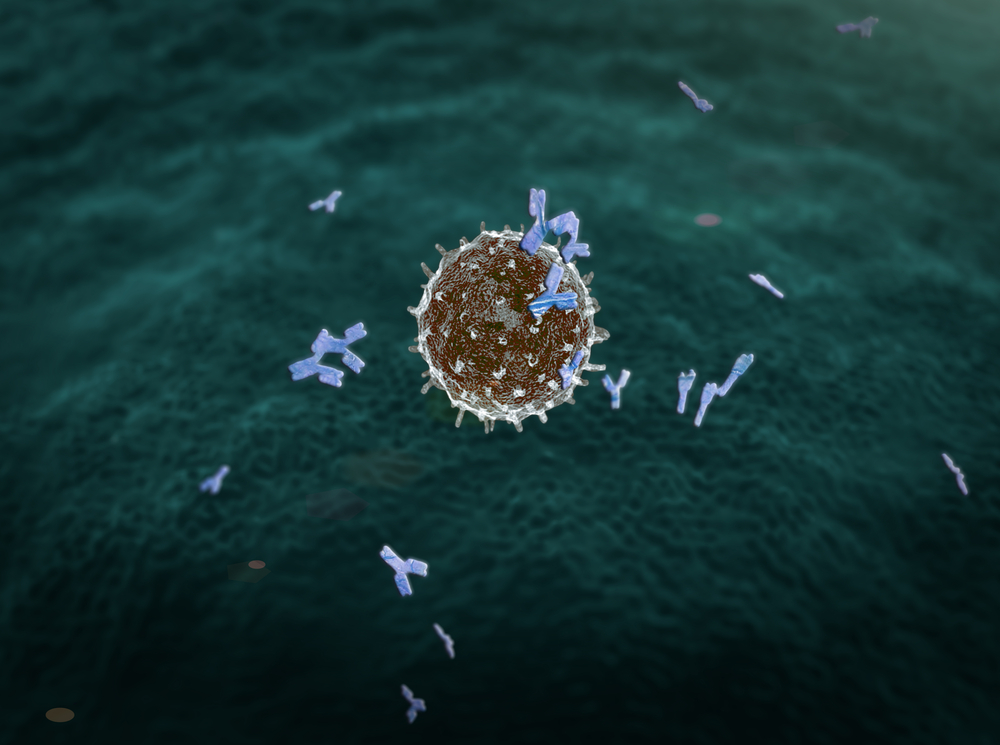A recent phase 1b study showed that combining standard chemotherapy with an antibody targeting the protein PDL1, short for programmed death-ligand 1 and whose key function is to suppress the immune system, yields beneficial outcomes to patients with advanced non-small cell lung cancer.
The results will be presented at the annual meeting of the American Society of Clinical Oncology (ASCO) and already prompted researchers to develop further studies, leading the project to Phase III studies with lung cancer patients.
The study included 37 patients with non-small cell lung cancer that received no therapy until the trial and were treated with standard platinum-based chemotherapy, receiving one of three possible combinations of platinum-based drugs – paclitaxel/carboplatin, pemetrexed/carboplatin or nab-paclitaxel/carboplatin – and complementing the chemotherapy regimen with MPDL3280A, an antibody targeting PD-L1. While standard chemotherapy alone was shown in the past to lead to 30 – 35 percent response rates, the new combined treatment response rates between 60-75 percent, was considered a remarkable result. Additionally, two complete responses were previously registered with patients CT scans showing no evidence of lung cancer.
So what is the mechanism behind anti-PDL1? One of the characteristics of many cancers is the ability to hijack patients’ immune response to prevent it from working against tumors. This is achieved by many mechanisms, including upregulating the expression of PD-L1 in tumor cells, thus shutting down immune responses directed against the tumor, specifically T-cell immune responses. As explained by the study lead author Stephen V. Liu, MD, assistant professor of medicine at Georgetown Lombardi Comprehensive Cancer Center, “The body needs to tightly regulate immune function. When T-cells are activated under normal conditions, they are quickly suppressed, to prevent over-activation. This suppression is controlled by the interaction of PD1 (a receptor on the immune cells) and PD-L1, the protein that binds to the PD1 receptor. The problem is that many tumors express PD-L1 and are able to escape T-cell immunity”.
So, when patients are treated with anti-PDL1, these drugs are preventing the interaction of PD-L1 with the T cell receptor PD1, and therefore maintaining T cells “switched” on.
Results from the trial are particularly important since, “A complete response is not typically seen in patients with stage IV lung cancer,” Liu explained, “And the response rates seen with MPDL3280A and chemotherapy were higher than one would expect with chemotherapy alone.”
The team, which includes researchers from the University of Colorado, Duke University Medical Center; Massachusetts General Hospital, Carolina BioOncology Institute, Dana-Farber Cancer Institute, and Yale Cancer Center, reported that the therapy was well tolerated and without signs of unreported toxicities. The most common adverse effects of MPDL3280A were anemia and lower levels of certain immune cells, such as neutrophils, which may increase the risk for infections; additionally, low platelet counts were also registered, thus increasing patients’ risk of bleeding.
The team considered these results very promising and as Liu noted, “MPDL3280A represents an approach at targeting not PD1, but its ligand, PD-L1, which may provide some advantages. The combination with chemotherapy in the first line setting certainly deserves further study.”


